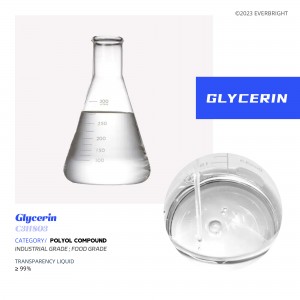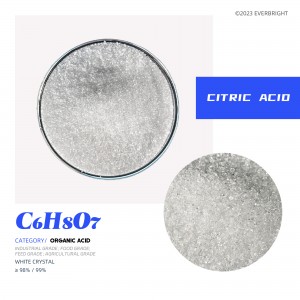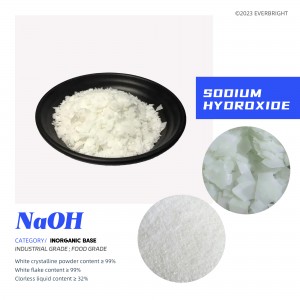-

CDEA 6501/6501h (Coconutt Diethanol Amide)
CDEA can enhance the cleaning effect, can be used as an additive, foam stabilizer, foam aid, mainly used in the manufacture of shampoo and liquid detergent. An opaque mist solution is formed in water, which can be completely transparent under a certain agitation, and can be completely dissolved in different kinds of surfactants at a certain concentration, and can also be completely dissolved in low carbon and high carbon.
-

Sodium Bisulfate
Sodium bisulphate, also known as sodium acid sulfate, is sodium chloride (salt) and sulfuric acid can react at high temperatures to produce a substance, anhydrous substance has hygroscopic, aqueous solution is acidic. It is a strong electrolyte, completely ionized in the molten state, ionized into sodium ions and bisulfate. Hydrogen sulfate can only self-ionization, ionization equilibrium constant is very small, can not be completely ionized.
-

Glycerol
A colorless, odorless, sweet, viscous liquid that is non-toxic. The glycerol backbone is found in lipids called triglycerides. Because of its antibacterial and antiviral properties, it is widely used in FDA-approved wound and burn treatment. Conversely, it is also used as a bacterial medium. It can be used as an effective marker to measure liver disease. It is also widely used as a sweetener in the food industry and as a humectant in pharmaceutical formulations. Due to its three hydroxyl groups, glycerol is miscible with water and hygroscopic.
-

Sodium Chloride
Its source is mainly seawater, which is the main component of salt. Soluble in water, glycerin, slightly soluble in ethanol (alcohol), liquid ammonia; Insoluble in concentrated hydrochloric acid. Impure sodium chloride is deliquescent in air. The stability is relatively good, its aqueous solution is neutral, and the industry generally uses the method of electrolytic saturated sodium chloride solution to produce hydrogen, chlorine and caustic soda (sodium hydroxide) and other chemical products (generally known as chlor-alkali industry) can also be used for ore smelting (electrolytic molten sodium chloride crystals to produce active sodium metal).
-

Sodium Hypochlorite
Sodium hypochlorite is produced by the reaction of chlorine gas with sodium hydroxide. It has a variety of functions such as sterilization (its main mode of action is to form hypochlorous acid through hydrolysis, and then further decompose into new ecological oxygen, denaturating bacterial and viral proteins, thus playing a broad spectrum of sterilization), disinfection, bleaching and so on, and plays an important role in medical, food processing, water treatment and other fields.
-

Citric Acid
It is an important organic acid, colorless crystal, odorless, has a strong sour taste, easily soluble in water, mainly used in food and beverage industry, can be used as sour agent, seasoning agent and preservative, preservative, can also be used in chemical, cosmetic industry as an antioxidant, plasticizer, detergent, anhydrous citric acid can also be used in food and beverage industry.
-

Colourful Speckles
For washing powder embellishment, washing powder manufacturers use color particles to enhance collaborative washing, enhance synthetic washing effect, enhance beauty. Mainly blue, green, red, rose, yellow, orange, purple, ultramarine, pink, golden yellow, red, white and other pearl-shaped hard particles.
-

Sodium Hydroxide
It is a kind of inorganic compound, also known as caustic soda, caustic soda, caustic soda, sodium hydroxide has strong alkaline, extremely corrosive, can be used as acid neutralizer, with masking agent, precipitating agent, precipitation masking agent, color agent, saponification agent, peeling agent, detergent, etc., the use is very wide.
-

Sodium Silicate
Sodium silicate is a kind of inorganic silicate, commonly known as pyrophorine. Na2O·nSiO2 formed by dry casting is massive and transparent, while Na2O·nSiO2 formed by wet water quenching is granular, which can be used only when converted into liquid Na2O·nSiO2. Common Na2O·nSiO2 solid products are: ① bulk solid, ② powdered solid, ③ instant sodium silicate, ④ zero water sodium metasilicate, ⑤ sodium pentahydrate metasilicate, ⑥ sodium orthosilicate.







